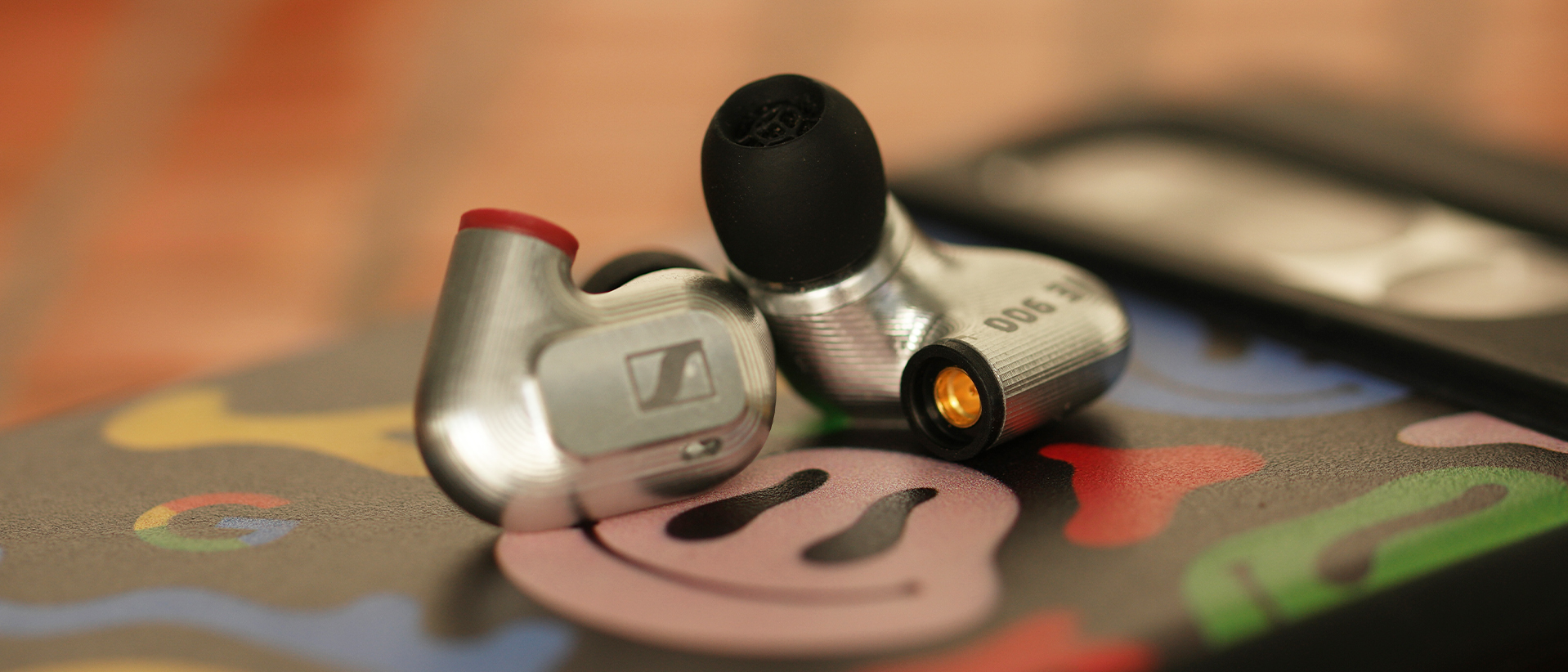Android Central Verdict
Let’s begin with the elephant in the room: These cost $1500. In my opinion, they’re worth every penny. For many people, the Sennheiser IE900 IEMs will be an aspirational purchase. Still, they’re truly an inspirational listening experience, and if you can afford them, they should definitely occupy a prominent place in your recreational or active listening session tool chest.
Pros
- +
Build quality
- +
Analytical listening
- +
Ability to take EQ and deeeep bass extension
- +
Included accessories
Cons
- -
Price? Price.
Why you can trust Android Central
“Transcendent” best describes my time with the Sennheiser IE900 IEMs. From the carrying case and included accessories to the build quality and sound quality, if I purchased these with my own money, there would be absolutely no buyer’s remorse for me.
I’ll spend the rest of this review telling you why.
The Sennheiser IE900 aren't cheap
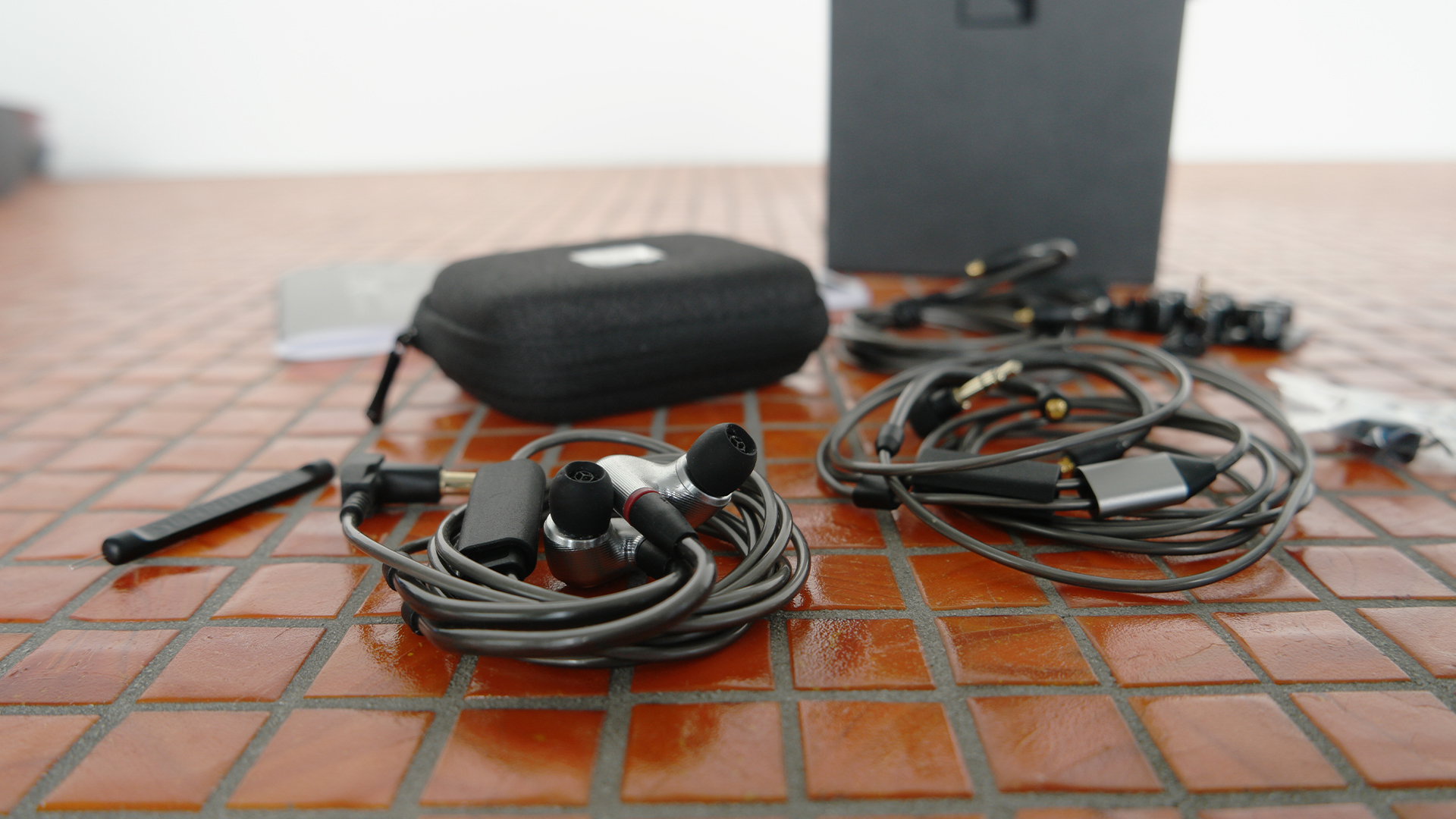
You can purchase the Sennheiser IE900 IEMs directly from Sennheiser for $1,499.98. You can also find it from retailers like B&H Photo and Best Buy, and during the most recent Prime Day sales, it could be found on Amazon for close to $900.
Matter of fact, if you wait on Amazon, the IE900s have gone on sale a few times, even dropping as low as $999.95 in June of 2023. If I had money just sitting somewhere for a large-ish tech purchase, I’d jump on that immediately, then build a shrine in my home to store them when not in use.
| Category | Sennheiser IE900 |
|---|---|
| Speakers | Single 7mm dynamic driver |
| Frequency response | 5Hz - 48kHz |
| Impedance | 18 Ω |
| Sound pressure level (SPL) | 123dB (1 kHz, 1 Vrms) |
| Total harmonic distortion (THD) | < 0.05% (1 kHz, 94 dB) |
| Connectors | stereo jack plug, gold-plated, MMCX plug |
| Row 6 - Cell 0 | Row 6 - Cell 1 |
What does $1500 get you?
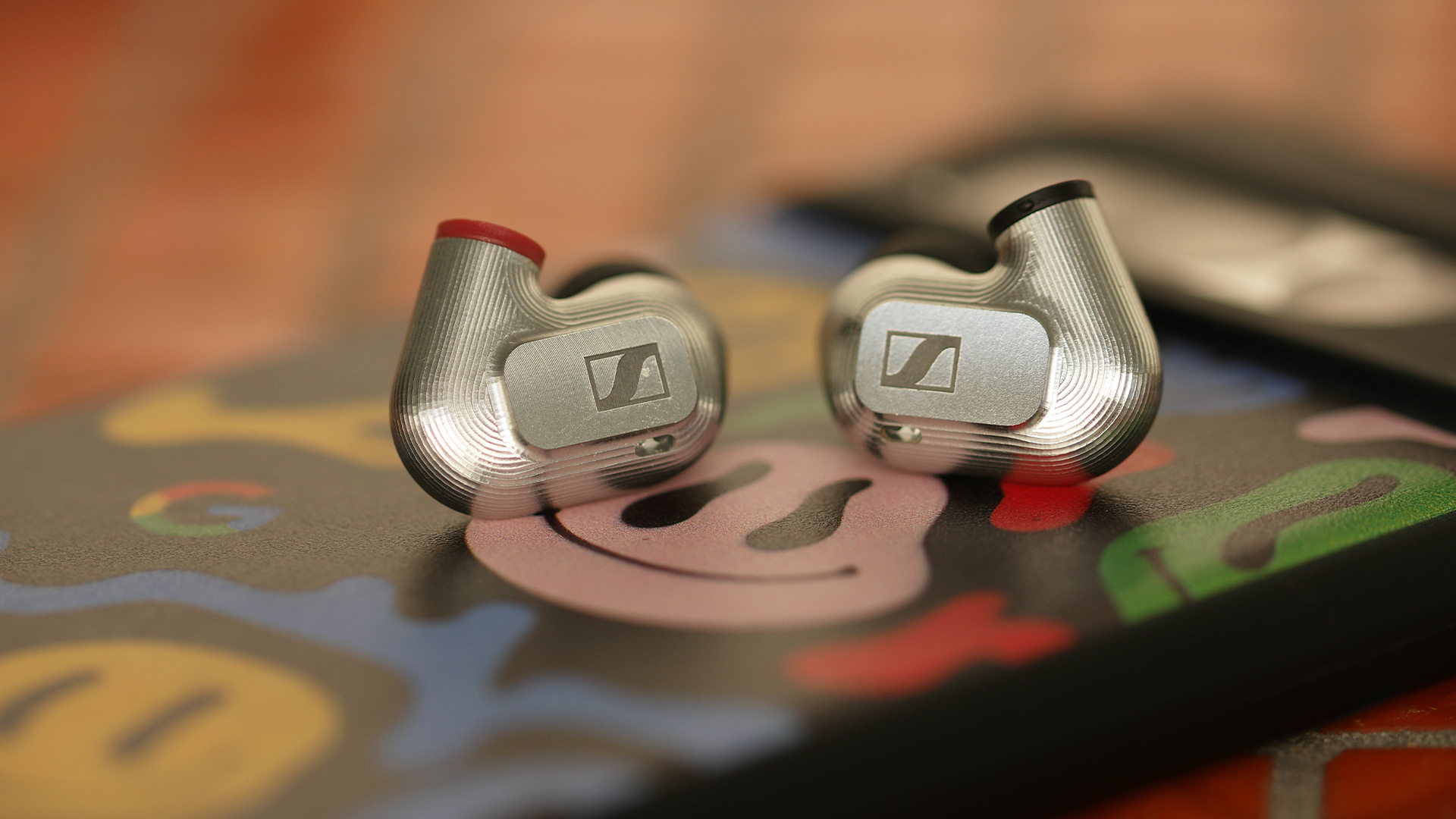
If you couldn’t tell already, I like everything about my experience with the Sennheiser IE900 IEMs. Their chassis is beautifully designed, even though it’s what’s inside that counts. It’s hard to make something so small look “worth” $1,500, but they definitely put their best foot forward as they are beautifully machined and look like art pieces up close.
There have been times when I’ve reviewed a product and felt like it should’ve come with more accessories in the box for the price it was retailing for. With some premium-priced products, I’ve found myself asking, “Why do I need to buy an additional ______ at x price point?” Not with the IE900s.
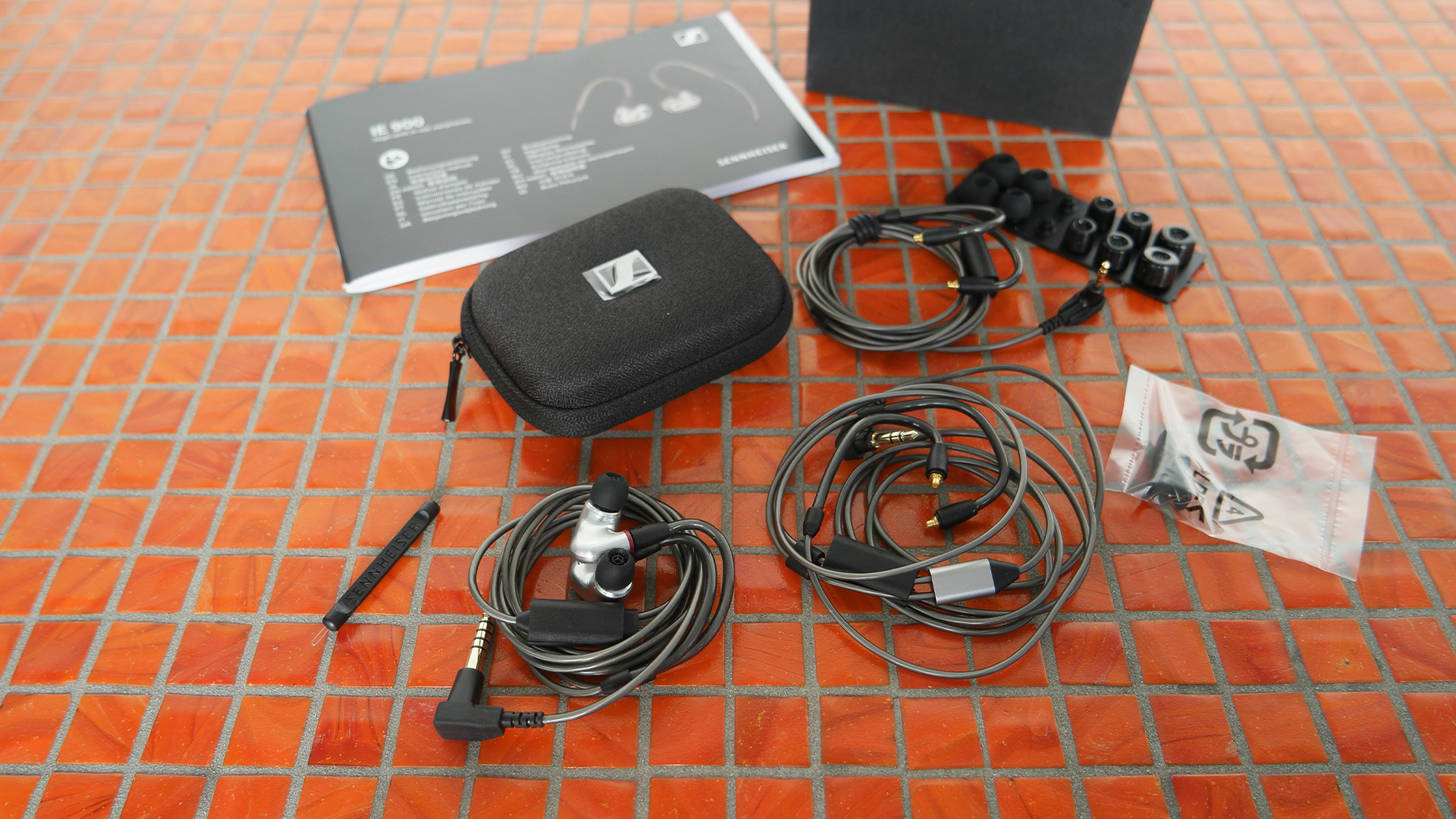
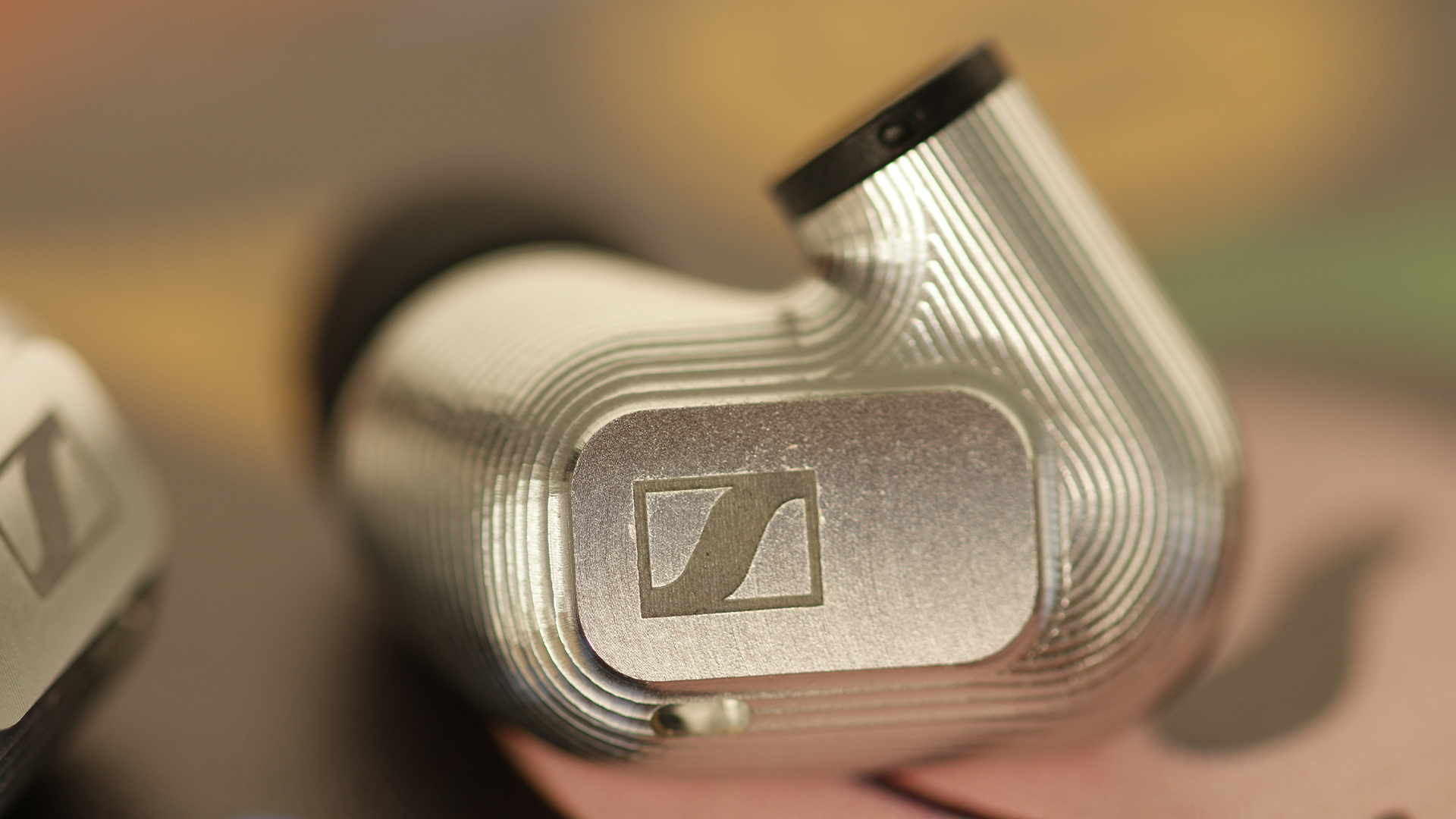
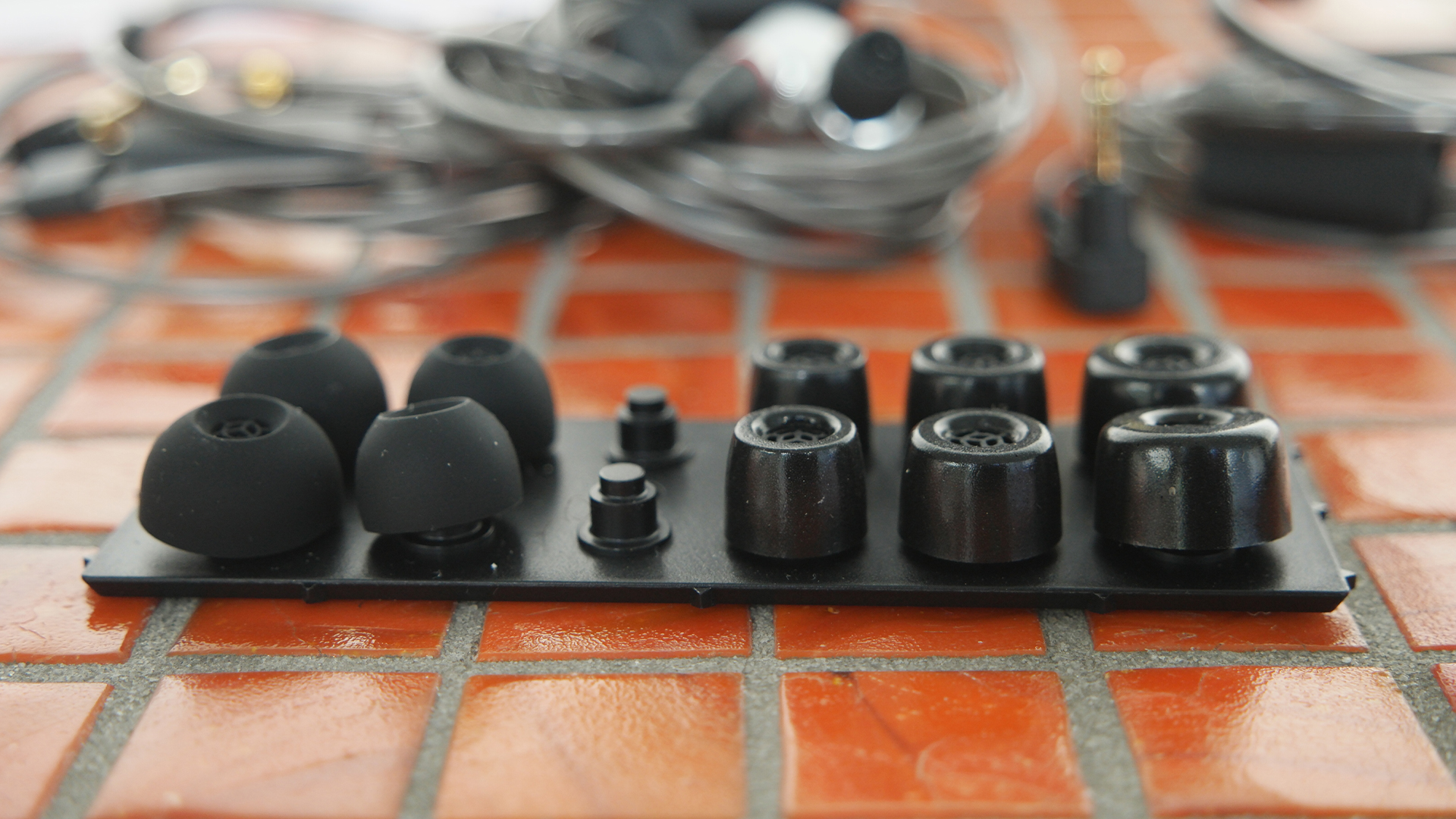
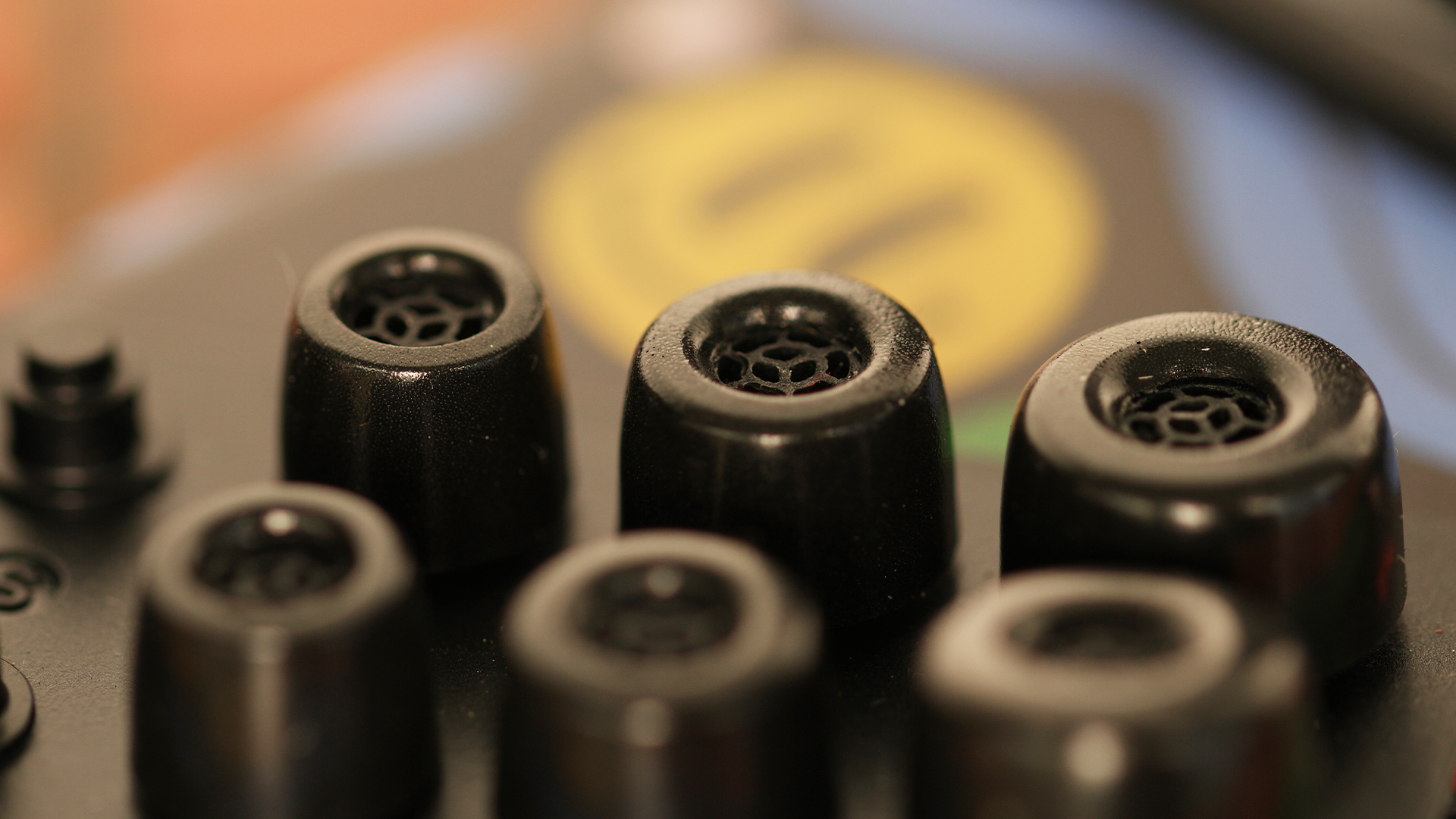
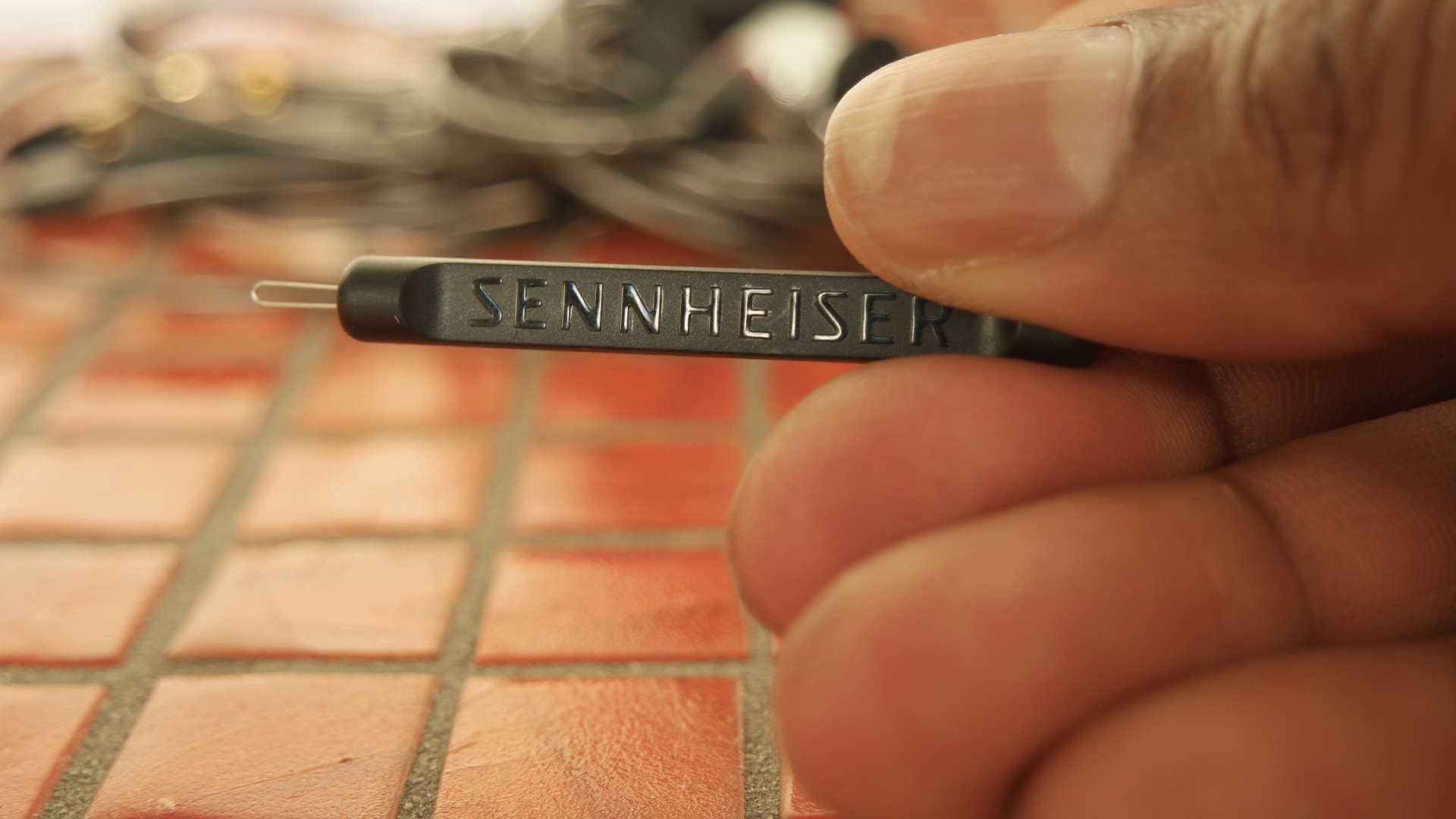
In the box, you get 2.5mm/3.5mm/4.4mm para-aramid reinforced gold-plated MMCX cables (Kevlar is a type of para-aramid), a premium hard case, silicone and memory foam ear tips (S, M, L), and cleaning tools. Your bases are covered unless you want to be very particular and look for a 3.5mm-to-1/4-inch adapter.
How does $1500 sound?

Let’s talk about the most important aspect: how the IE900s sound. I used them with a few different mobile DACs and one desktop DAC, as I’ve been testing a few for a roundup. Like a fine wine, IEMs may pair better with some DACs than others. My favorite pairings were the iFi GO bar Kensei, iFi GO blu, and Qudelix-5K for its high-quality PEQ.
Listening to Paul Simon’s “Diamonds on the Souls of Her Shoes” and “Sikiliza Kwa Wahenga (Main Title) from the “Get Out” OST is—at the risk of overusing the word— transcendent. The Ladysmith Black Mombazo acapella intro to “Diamonds” is gleefully airy, while “Sikiliza” is hauntingly ethereal with its heavy, ominous vocals. I can make out the pull and tension of the bow across the strings and the attack with the change in chords and movements as I listen to “Violin Duel” from the Chevalier OST. Charles Mingus’ “Moanin’” is a masterclass in engineering, in layering instrumentation in a stereo image, brought fully to life in living color through the Sennheiser IE900 IEMs.
With its transparent, balanced sound, everything I throw at the IE900s through the iFi GO blu and iFi GO bar Kensei is an absolute delight! That said, audiophiles might tell you that an IEM like this isn’t for bass heads. They’d be wrong. Very, very wrong.
On its own, the bass produced by the IE900s is well-balanced and tightly controlled but won’t leave your brain rattled. Some of us musical masochists like that, though. Bring on the bass cannon!
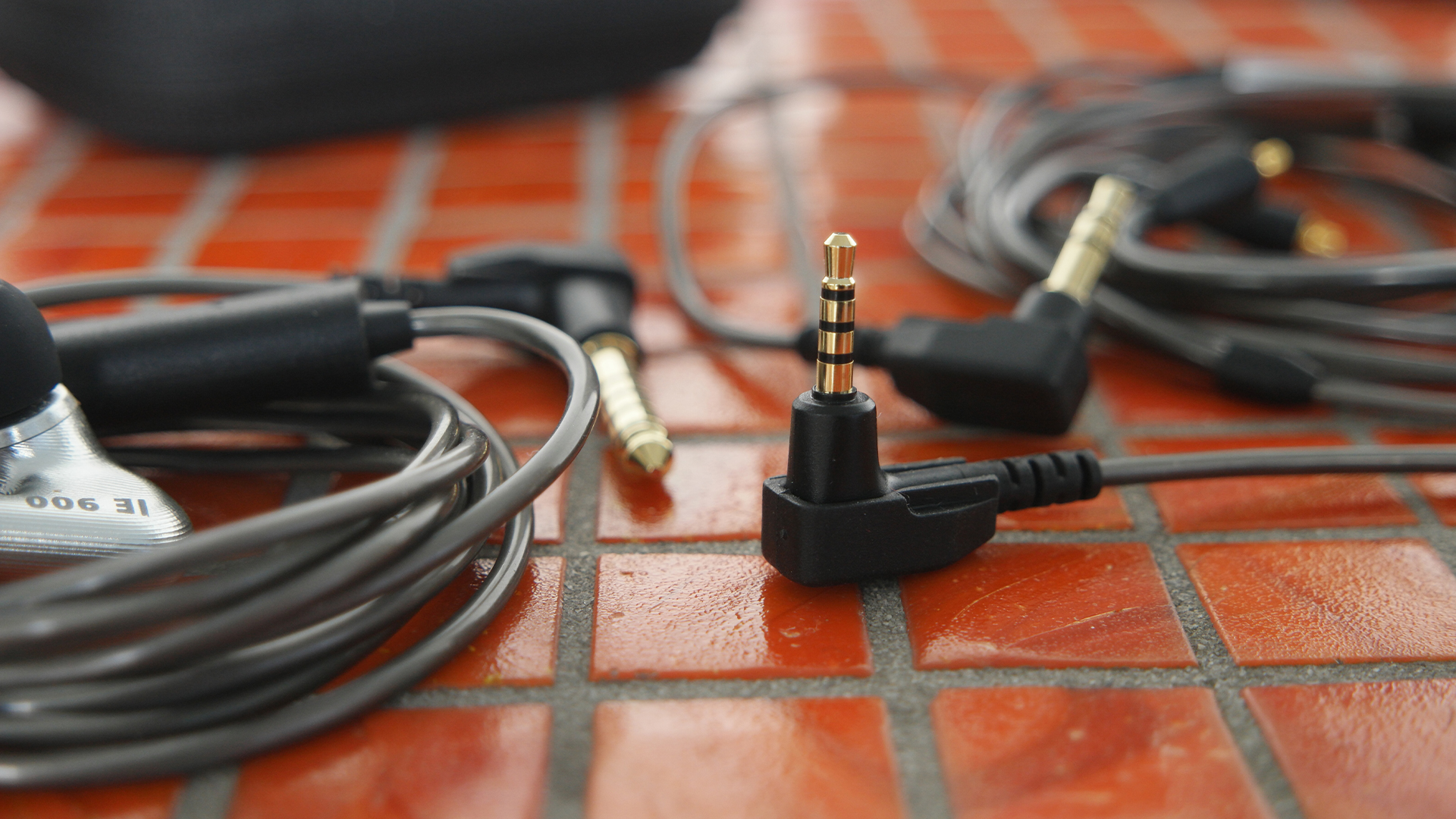
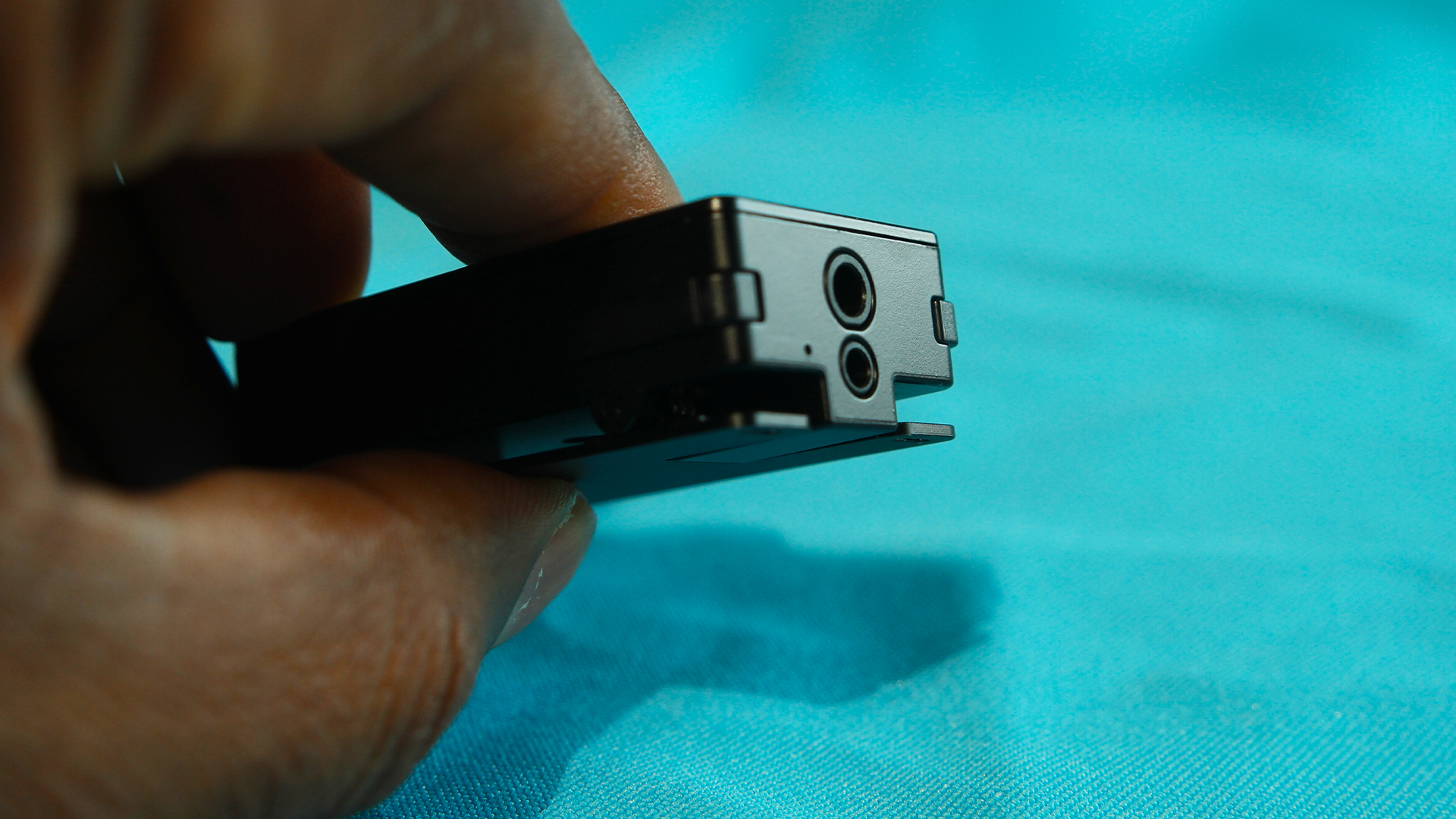
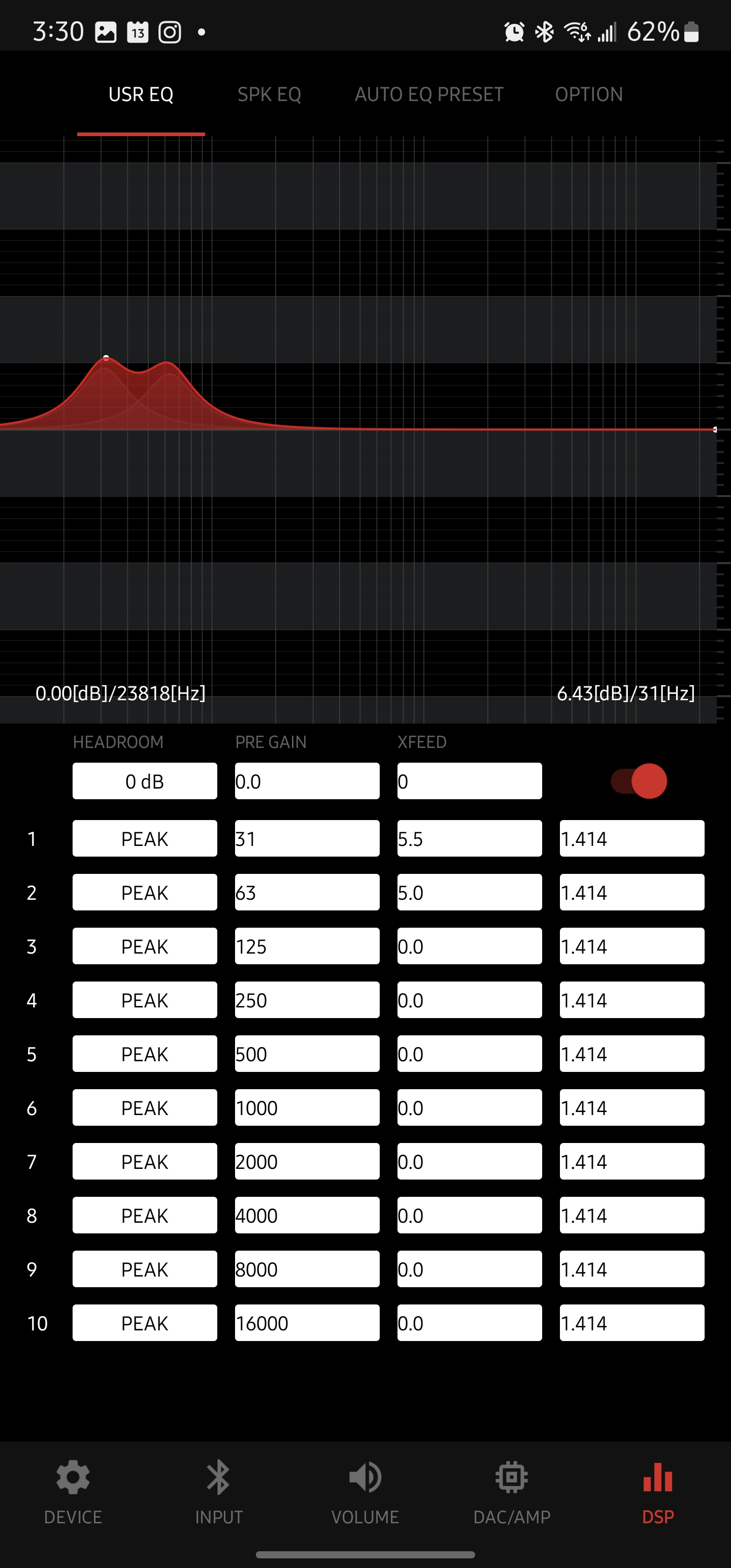
With that in mind (pun intended), I plugged the IE900s into the 2.5mm balanced output of the Qudelix-5K, which was connected via USB-C to a Pixel 7 Pro. Then, I went to the app’s 10-band parametric EQ, boosting the 36 and 63Hz bands by 5.5dB and achieving bass head Nirvana. I was glowing like Bruce Leroy as I bathed in the tight, soul-stirring bass and sub-bass of Skrillex's “Mumbai Power” and revisited the swinging upright bass in Mingus’ “Moanin’.”
As balanced as the IE900 is, the X3R TrueResponse transducer showed no fear when eating the hyped low-end curve I sat in front of it. Unlike some multi-driver IEMs, the IE900 has one dynamic driver that sits inside the X3R triple-chambers milled into the aluminum housings. This technological witchcraft allows the bass to be hyped up to nuclear levels without compromising clarity and detail in the other frequencies.
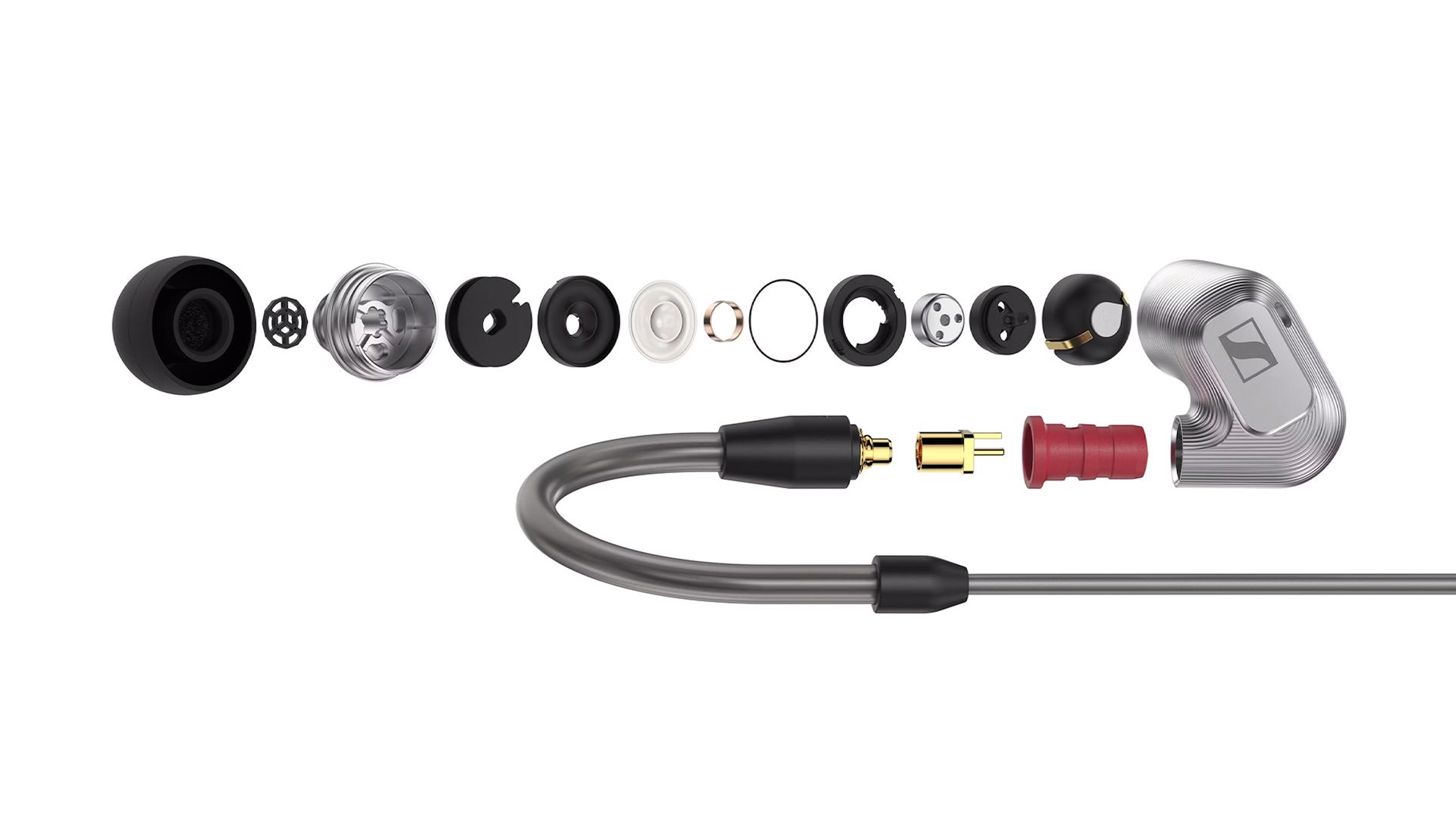
Speaking of frequencies and technical odds and ends, let’s take a moment and talk about what Sennheiser did with their single driver. It’s quite difficult to get balanced sound coming out of one speaker in a pair of IEMs. That’s why other manufacturers will cram multiple units inside those housings; different speakers for highs, lows, etc. But then you’re faced with the problem of having sounds butting up against each other like that, and you run into issues of phase coherence, which in English means two or more sounds running into each other and causing echo or tonal weirdness. That’s a very rudimentary explanation, but I think it gets the point across.
That said, when you use just one driver, you still run into some issues. To combat the potential for that single driver to have your mids and lows running together and a lack of detail and clarity in the overall sound, their engineers add a small chamber within a chamber inside the IEM housing. Something called a “back volume.” What this does is control the direction and overall volume of air as it moves through the transducer system while killing any fatiguing resonance as sound attempts to bounce around that chamber.
For those of you into cars and speaker systems, the small chambers of the IEMs are a very technical, precision-crafted “speaker box” of sorts.
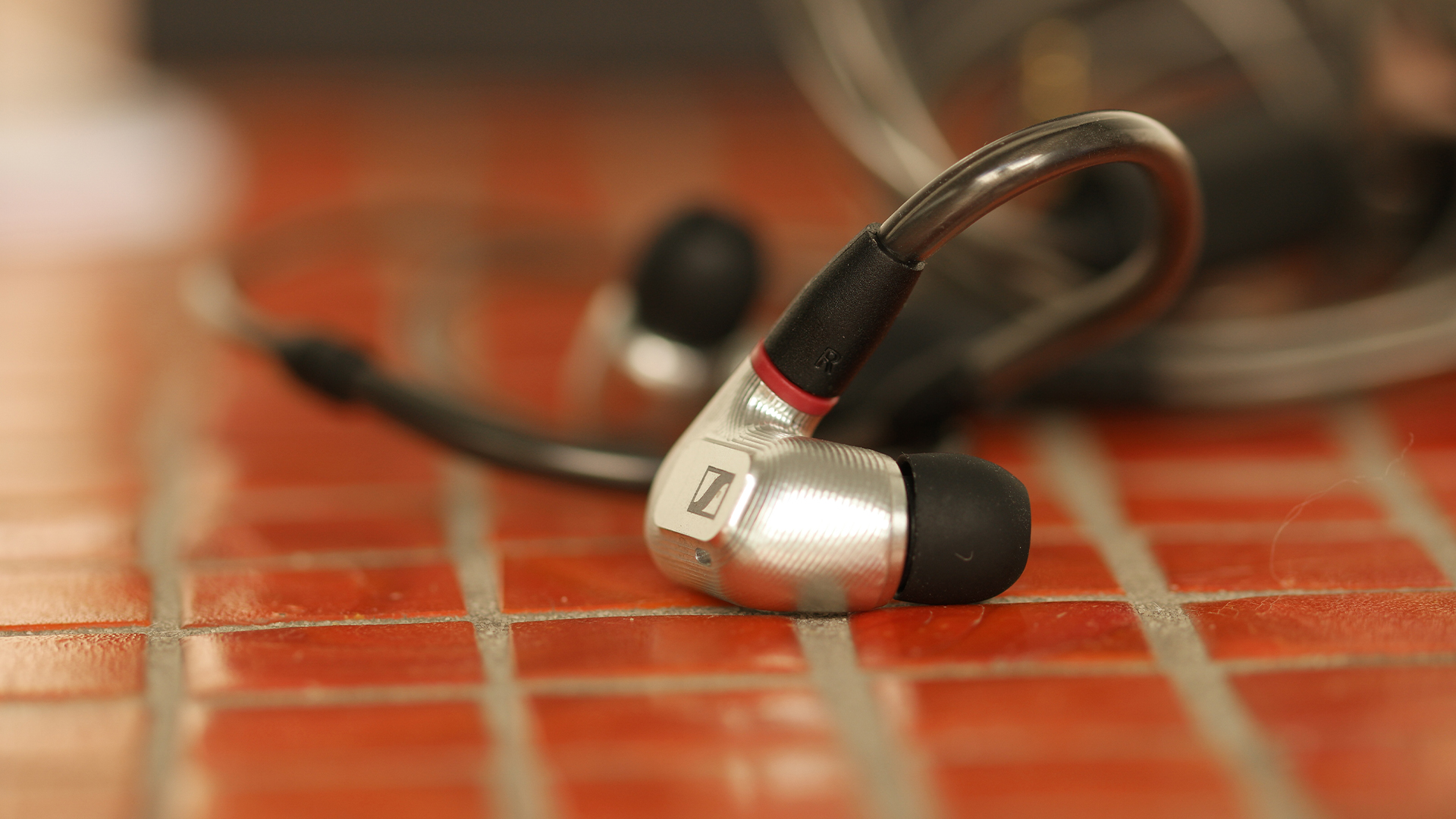
There wasn’t anything I didn’t like about the Sennheiser IE900 IEMs (and for $1500, there better not be!), but there is something some users may not care about if they’re primarily using these with a mobile device like a smartphone. There’s no inline mic cable in the box.
You can pick up a replacement cable specifically for the IE900 that has an inline microphone.
Does anything else compare?
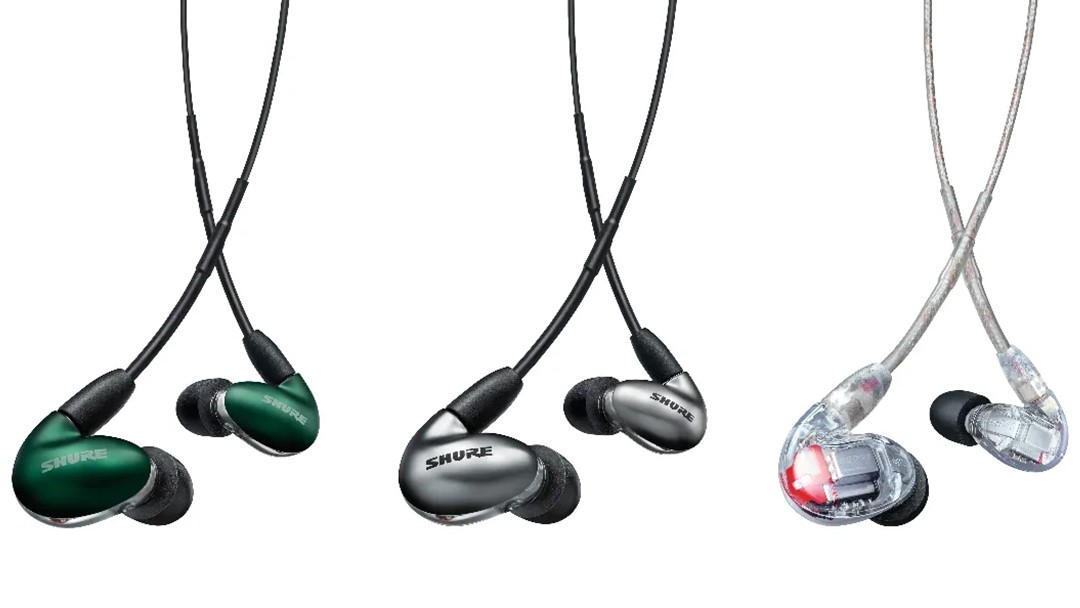
At, or around this price point, there are definitely some options for your listening pleasure. With sound being such a highly subjective experience, the issue is going to be deciding which option is best for you!
Technics EAH-TZ700 are solid performers that are more forgiving with dodgy recordings and lower resolution Spotify streams but less insightful when it comes to great recordings. Then there’s the Campfire Audio Andromeda ‘Emerald Sea’ with its five dual-diaphragm balanced armatures. It competes really well with the IE900, though you may find a bit more detail in the top end of the high frequencies and the lowest end of the low frequencies.
There’s also the Shure SE846 Gen 2 True Wireless bundle. They’re actually just at $1k but they sound magnificent and come with a bundle that makes them wireless enabled.
Should you buy them?
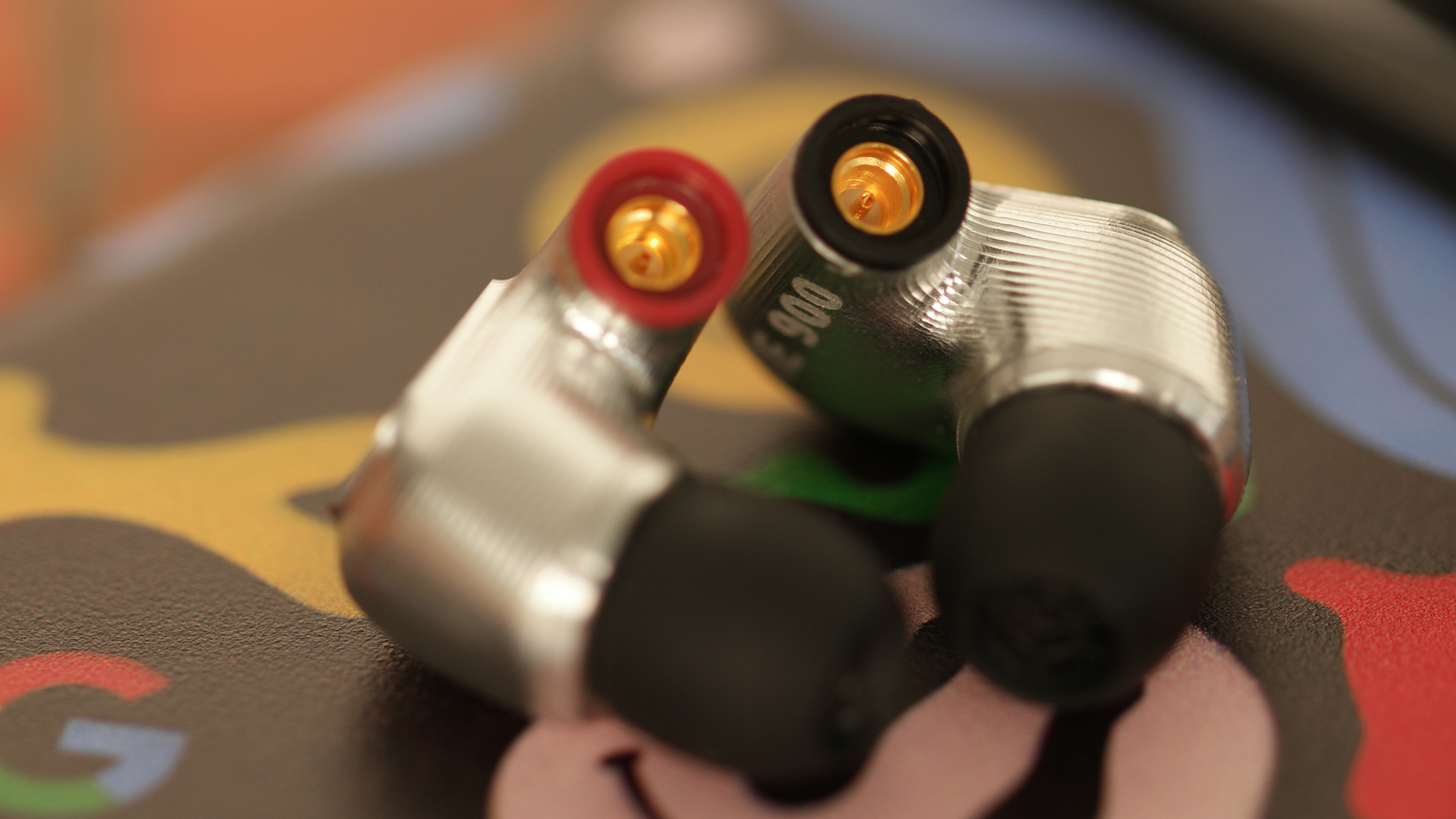
I’m completely infatuated with the Sennheiser IE900 IEMs. Their clarity, detail, and ability to eat up EQ like a champion hot dog eater make them a great pair for active recreational listening and for analytical inspection.
They come with enough extras in the box to cover whatever you decide to hook them up to, and fit shouldn’t be a problem, with enough ear tip options for the most finicky of ear canals. I highly recommend them...if you have the money to spare.
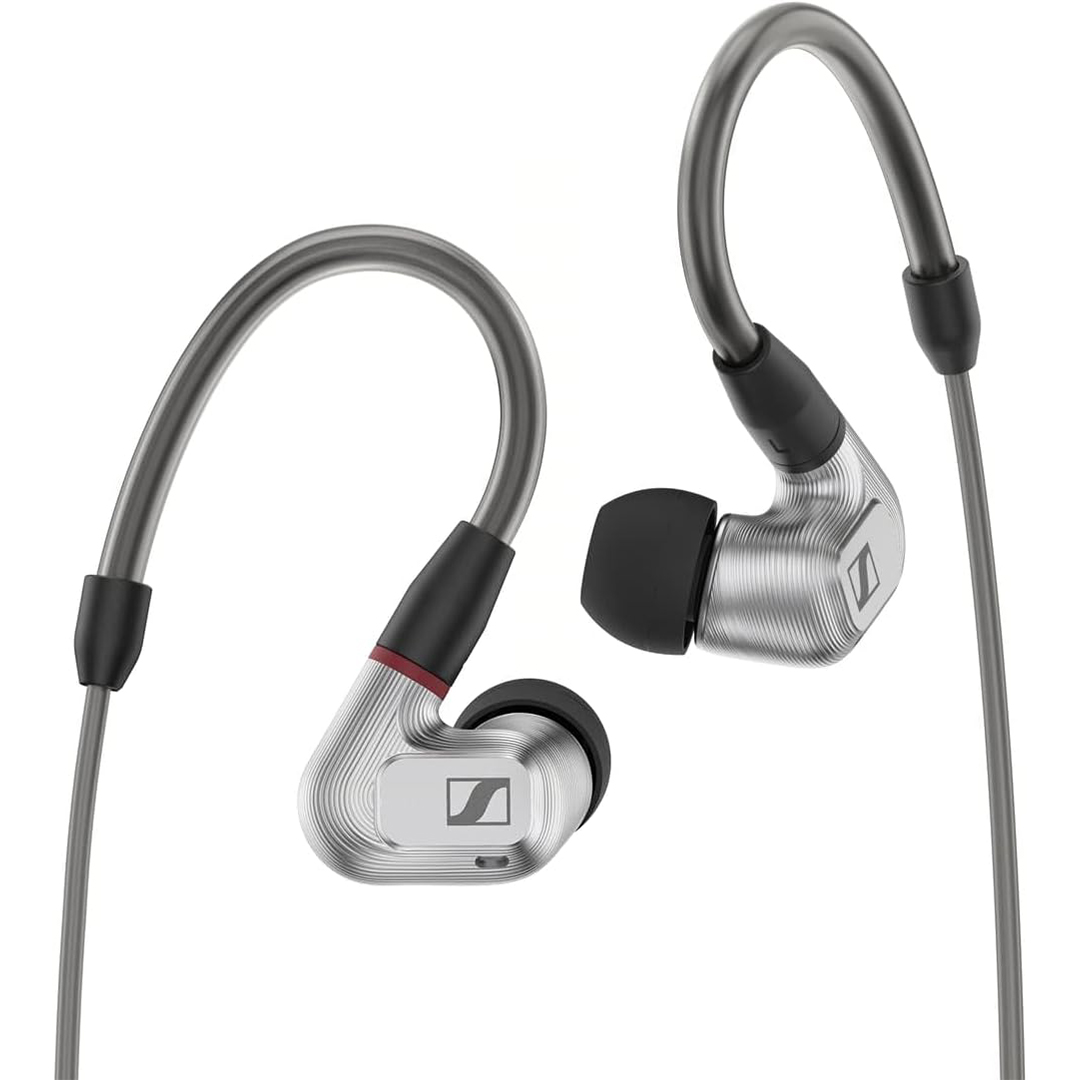
Joyful noise!
It's like the heavens opened up and began playing my favorite songs for me. Except it wasn't that, it was just me listening to the Sennheiser IE900 IEMs. For their clarity, detail, fit and finish, and their ability to take EQ, these are among the finest audio apparatus I've listened to besides the $50 Sennheiser Orpheus.

Tshaka Armstrong is a nerd. Co-Founder of the non-profit digital literacy organization, Digital Shepherds, he’s also been a broadcast technology reporter, writer and producer. In addition to being an award-winning broadcast storyteller, he’s also covered tech online and in print for everything from paintball gear technology, to parenting gadgets, and film industry tech for Rotten Tomatoes. In addition to writing for Android Central, he’s a video contributor for Android Central and posts everything else to his own YouTube channel and socials. He blathers on about his many curiosities on social media everywhere as @tshakaarmstrong.
You must confirm your public display name before commenting
Please logout and then login again, you will then be prompted to enter your display name.
